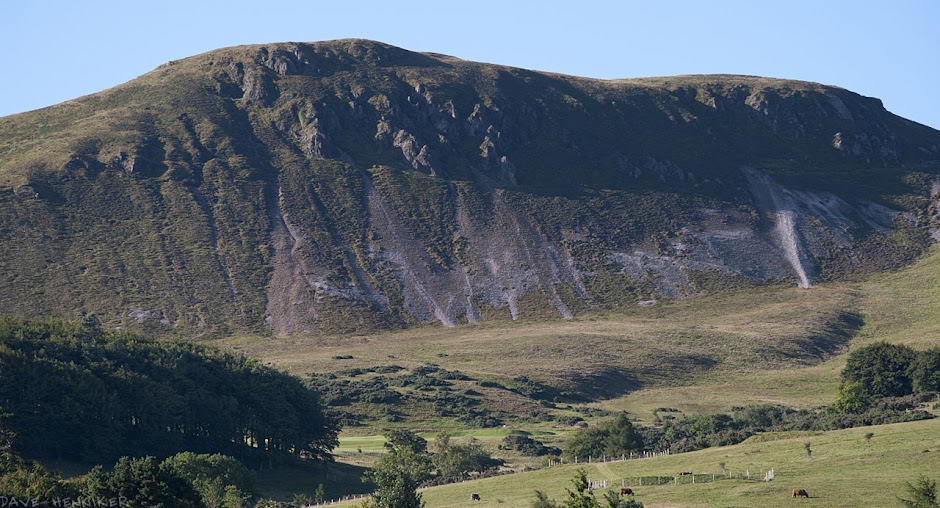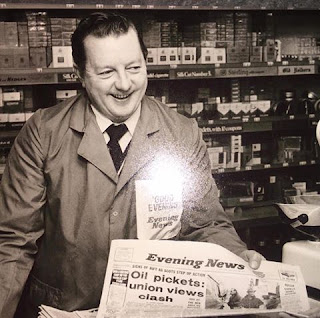'Mary (Ball) at the Broadway'
From a young age I used to go up the hill (Oxgangs Street) regularly to the (Oxgangs) Broadway. Initially, I would be sent for messages and when older it would also be of my own volition too. Probably this was from the age of only three or four.
Britain was famously called a nation of shopkeepers and even today it remains a dream occupation for many people.
Growing up in the area I never really considered that the shops at Oxgangs Broadway had not always existed, whereas they would have been built around the mid 1950s.
And of course behind each and every business venture there was an individual and a human story - a tale of individuals seeking out an entrepreneurial opportunity and actively taking the risk of following your dream - a dream of making it economically - a dream of working for yourself and aiming to provide for your family to lead a good and satisfying life.
Ian Ewart
A collection of the individual stories of those early pioneers from over sixty years ago - the first shopkeepers at Oxgangs Broadway would make for interesting reading today - their hopes and their aspirations; their successes and their failures; the ups and the downs; the joys and the worries; and the colourful customers; colourful stories and the life lessons learnt.
Was it a success or was it a failure?
Did it provide a good income or was it always a struggle?
How did it affect their health? And what happened if they were ill?
Was the business seasonal?
How above board was it!
Were there unusual or unorthodox transactions and business arrangements!
Did the stock fall off the back of a lorry!
Did some customers get 'tick?'
Did the early aspiration meet the realisation?
Did it become a conveyor belt that you just couldn't get off?
And if they could go back in time would they have done it all again?
All those stories, now sadly gone and difficult to resurrect.
As a young customer I only saw the shops as being retail institutions - they were there for our convenience and being too young was too unperceptive to realise there was a human story behind each and every one.
I assume that when the public housing schemes were first muted, designed and developed after the war that Edinburgh Corporation must have taken cognisance of local needs and included these small retail shop units for rental. But did they deploy a prescriptive and restrictive policy whereby (forgive the pun!) they had a 'shopping list' of the range of businesses they wanted to include e.g. one post office; one chemist; a dry-salter and so on or was it just left to the market and a laissez-faire approach?
'Forgan the Chemist' Photograph Sandra Catterson
I suspect that for some of those entrepreneurs they had perhaps worked in the particular trade but never before been the owner of the business. Now here was a once in a lifetime opportunity to go it alone - what excitement - what a worry! But how satisfying too.
Similar to tenants becoming home owners under Mrs Thatcher's government I wonder if in later years and decades they thereafter had the opportunity to purchase the shop units? I expect so. And that by then the shops that came and went in more recent decades were very much dictated by the market economy.
The shops at Oxgangs Crescent (sadly, now demolished) were similar to those at Oxgangs Broadway, except there were fewer of them whereas the shops at Oxgangs Broadway remain today, but are of course different; however there are still some similar types of shops to the past - e.g. a newsagent - but also there's a betting shop and three hairdressers; there is a convenience store - family owned and long established which has picked up some awards but is now up against the recent Aldi development on the former St John's Church site.
Photograph Mark Travis
On the north side there are some flats (recently refurbished) located above the shops which unusually take up two floors i.e. levels two and three.
Photograph Scott Arthur
The shops are set below ground level in a small self-contained dip of ground and mostly evenly distributed and laid out opposite each other; in winter the snow perhaps lies longer there. But the area between the shops serves as an interesting social area where during the day local neighbours can catch up with one another’s news.
 |
| Oxgangs Broadway In The Winter |
Back in the 1960s the shops were fairly small. However, there was a general St Cuthbert's Store - the Co-op - which was larger than the others and Ewart's took over the adjoining number 1 unit to create a double shop unit.
Behind the shops and up above were some further units including the well known Risi's Fish and Chip shop and Ben Mackenzie's Hairdresser's shop on on each opposite corner, but I seem to recall these units were mainly used by the shop-keepers down below for storage or back shop operations e.g. the butcher?
Photograph Mr Craigie
Today, these units are all in use including a large Corals bookies. It's unsurprising because these shop units are south facing and you can park directly outside; however they are set away from the 'main body of the kirk.'In 1836 Charles Dickens lamented that newer, shinier establishments are replacing ‘quiet, dusty old shops’. Some of Joseph Mckenzie's recent memories of 'Jock the Butcher' who worked at St Cuthbert's Co-op at Oxgangs Road North makes me optimistic that with the fantastic resource of the 'Oxgangs - A Pastime From Time Past' Facebook group and 'online encyclopedia' that we may yet still rescue some of the tales and stories of the original shop-keepers at 'The Broadway' before it's too late in the day.
Listed below are each of 'the originals.'
1. Macnab A & J Ltd.
2. Ewart, Mrs E.
3. McNish, R.F.
5. Holmes
6. McKenzie
7. Forgan D.R.
8. Smith, C.
11-14 Smith, W.
9&18 Sandison & Douglas
St Cuthbert's Co-operative
12. Allan G.
Risi
Ben Mackenzie






